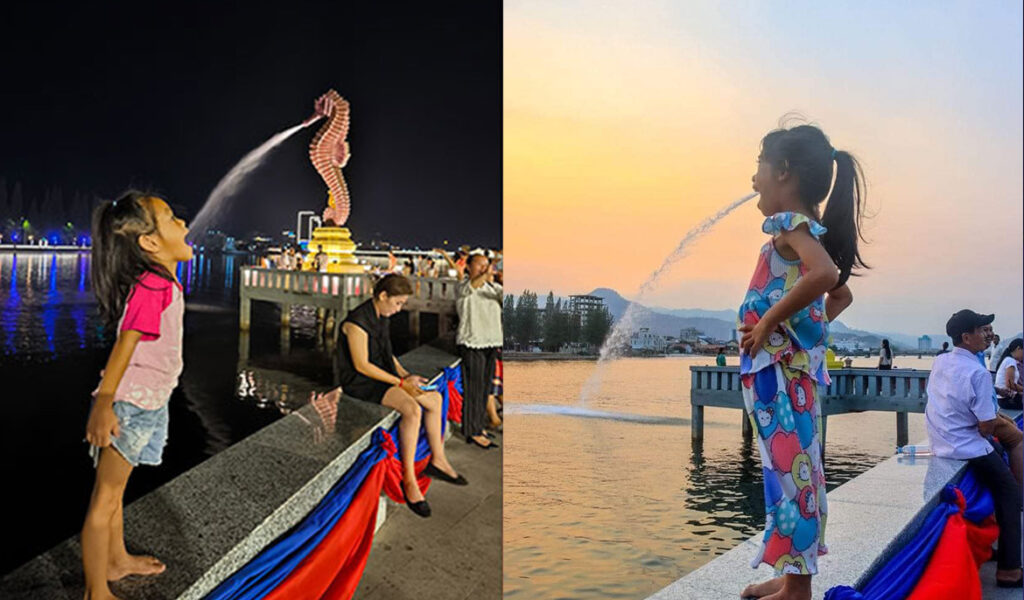Drawing parallels to Singapore’s iconic Merlion, the half-man half-lion sculpture that has become synonymous with the city-state, the newly unveiled statue of a seahorse has shot to national prominence. The hitherto unheralded small town of Kampot now boasts of a tourist attraction as emblematic as the Merlion.
The statue standing at a height of 8 metres, in front of the old provincial hall, sprays water into the Kampong Bay stream amid spectacular coloured lights after dark. Tourists, international and domestic alike, have been flocking to the latest spectacle in droves. Crowds have already dubbed it Singapot.

A day before its official inauguration on Wednesday, Mao Thonin, Governor of Kampot Province inspected the installation, stressing the importance of the place in tourist value. The seahorse was reportedly chosen to represent the wealth of biodiversity in the Kampot waters. The date of the inauguration was deliberately chosen to precede the Khmer New Year from April 13 to 16.
The construction of a new seahorse statue in Kampot to boost local tourism is an interesting initiative, said Jeremie Clement, General Manager, Peninsula Phnom Penh. The idea to follow cities like Singapore, where the Merlion statue became one of the most recognizable symbols of the country and attracts millions of tourists each year, or like Geneva with the Jet d’Eau fountain, for instance, is a prominent landmark that attracts tourists.
The new seahorse statue in Kampot is more than just a new sight to see, said Clemy Balasoto, Owner of Phoenix Lab Asia, Sales Marketing Director Real Spa Cambodia. It reflects the city’s growth and its goal to stand out among cultural landmarks. Mixing modern art with Kampot’s historic feel, the statue showcases the city’s blend of old and new.
The seahorse symbolizes patience and happiness, fitting well with Kampot’s relaxed and charming atmosphere. It serves as a reminder for both the locals and tourists to enjoy the serene environment.
This seahorse is a good reminder that Kampot is also a seaside destination, said Catherine Germier-Hamel, Founder & CEO of Millennium Destinations. “However this statue strangely evokes Singapore’s Merlion to me and I personally prefer the durian roundabout as a landmark.”
Just as the crab statue in Kep has become a symbol associated with the town and its identity, the new seahorse statue in Kampot could indeed serve as a branding element for the city, continued Clement. When people think of Kep, they often think of its beautiful coastline, seafood, and, of course, the crab statue. Similarly, with the introduction of the seahorse statue in Kampot, it could become a focal point for tourists and locals alike, symbolizing the city’s connection to the river and marine life. (Course khmertimeskh)



